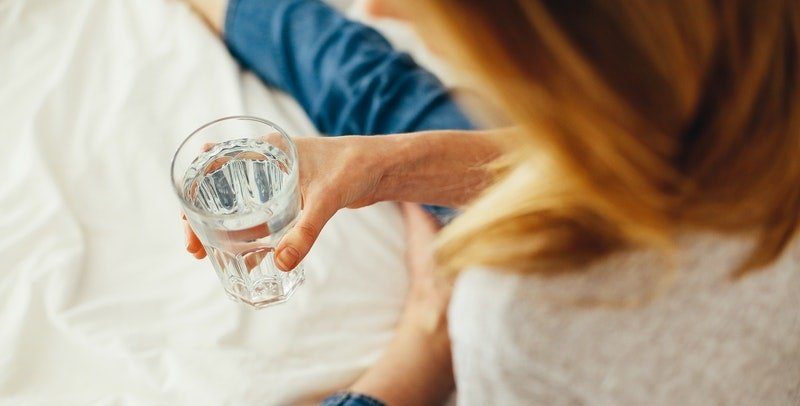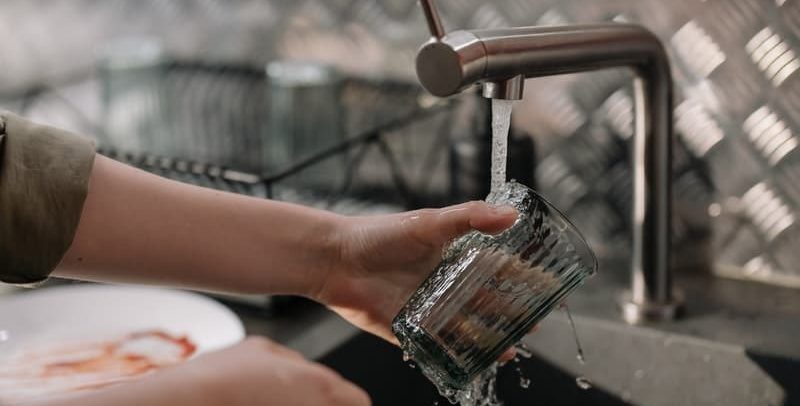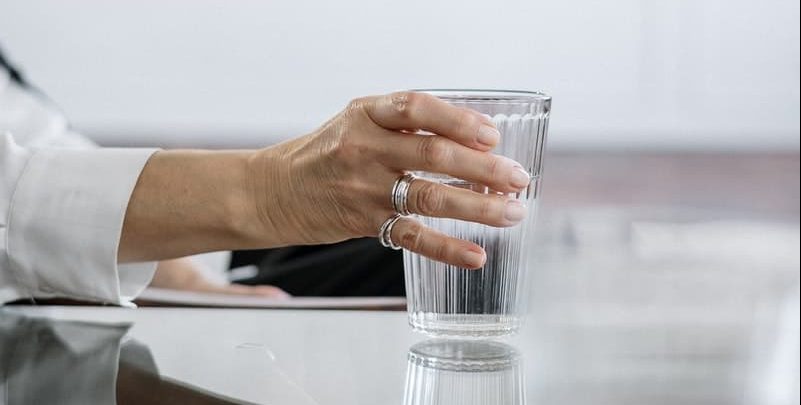
Is Limescale Harmful? (Plus How to Get Rid of It!)
Ever given much thought to that white, chalky limescale build-up around your bathroom and kitchen fixtures? Ever asked if limescale is harmful?
To understand if limescale is bad for you, first, we need to know what it is. We’re going to cover all this, plus what you can do to get rid of it.
What is Limescale?

What is limescale, exactly? Limescale is the hard white and chalky residue of minerals such as excess calcium and magnesium left over once water has evaporated from a surface. You might find it coating your clean dishes left out to air dry or even leftover on your clean laundry.
Calcium and magnesium ions are present in most water supplies and are naturally picked up by water as it travels. Consisting mostly of calcium carbonate, you will often find a limescale buildup around the home in kettles, water heaters, around taps and fixtures as well as in your pipework.
Water with mineral particles and especially high concentrations of these minerals is called hard water. Water with a low concentration of minerals is referred to as soft water.
Why is Limescale a Problem?
Limescale can pose a variety of problems in your home. Some of the downsides to having especially hard water include:
- bad tasting tap water
- unpleasing limescale residue on your fixtures and taps
- more cleaning products to clean the residue from dishes, clothes, etc.
- more difficulty washing clothes and dishes
- leaves watermarks on your clean dishes
- can leave washed laundry feeling stiff
- residue buildup on appliances and in plumbing pipes which could lead to blockages
The buildup of dissolved calcium and magnesium minerals is the cause of these problems. They accumulate on your clothes, dishes and on your fixtures, leaving behind the familiar white residue.
Long term, this can accumulate so much that it can impede or even block your plumbing pipes or degrade your appliances such as your kettle and washing machine. This can inevitably lead to increases in your water and heating bills.
Is Limescale Harmful to Drink?

Water hardness can wreak havoc across your home, but is limescale harmful to drink? According to the World Health Organization (WHO), the answer is no. In fact, there might even be some positive limescale health effects for the human body, helping you meet your daily mineral requirements!
The main problem you’ll encounter with hard drinking water is the taste. And even that’s up to personal preference.
Many people find hard water tastes more bitter, and even salty, compared to filtered water or bottled water. That said, soft water can taste bland and like nothing, which many people also dislike.
Some bottled water companies even add minerals to their own water supply to improve the taste!
How to Remove Excess Calcium and Magnesium Minerals
Regardless of how harmless limescale is to your health, you’ll probably want to at least clean up the nasty white mineral deposits it leaves behind. The best way to remove limescale is to prevent it from forming in the first place. The most effective way to do this is with a water softener.
Water Softeners
Water softeners work by passing hard water through resin beads. These beads contain positively charged ions that latch onto the negative components of minerals your water contains, effectively removing them.
Not only will you prevent the cause of limescale deposits in your home and avoid having to purchase limescale remover, but you’ll also enjoy the benefits of soft water:
- Easier to produce a lather with soaps and washing products
- Clothes are left cleaner and with no residue
- Fewer water pressure problems
- Dishes are left cleaner and take less time to clean
- Hair and skin is more healthy
- Appliances that use water last longer
Softened water has its drawbacks, though:
- Drinking too much soft water can increase sodium levels in your body which can be dangerous
- Softened water is more prone to picking up contaminants in your pipes
- A water softener can increase water consumption in your home
Limescale Remover
Given the cons of softened water, you might not be interested in investing in a water softener. Thankfully, you can get rid of limescale by simply cleaning it!
DIY Scale Remover
If you’re looking for a DIY approach to removing limescale, all you’ll need is lemon juice or vinegar! Before attempting any DIY method, however, you should check to see if lemon juice or vinegar will damage whatever you’re cleaning. If you’re unsure, do a small patch test on the fixture on a section where you won’t notice it.
If you can remove the fixture with scale on it, simply soak it in a mixture of half lemon juice or vinegar, half water, for at least an hour, preferably overnight. Give it a good rinse to remove any residue and reinstall it.
For taps and other bathroom fixtures that you cannot remove, you can soak a cloth in that same half lemon juice/vinegar, half water solution from above and wrap it around the areas with scale. Leave this overnight and the next morning unwrap the cloth.
You might need to scrub at the scale a bit with this method, but you should be left with scale-free taps and fixtures!
As a preventative, you can make a 50-50 mix of lemon juice/vinegar and water and spray it on your fixtures occasionally. Make sure to rinse it thoroughly with water afterwards to prevent it from leaving a residue.
Leave this same solution overnight in your kettle or run a cycle of your dishwasher and washing machine to remove limescale buildup here too.
Store-Bought Limescale Remover
If the DIY approach doesn’t quite cut it or you don’t want to risk damaging your appliances and fixtures, you can always use a dedicated limescale-removing product. These will come with all the information you need to know about what you can use it on, and how.
Published: 2021-03-11

















